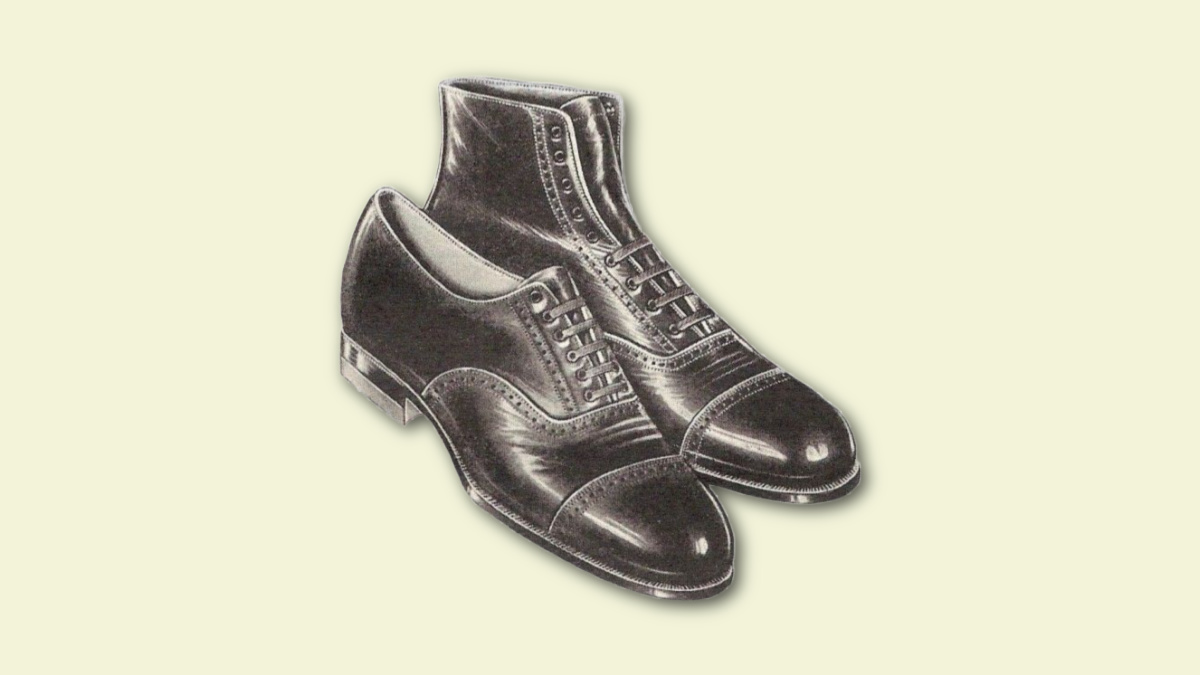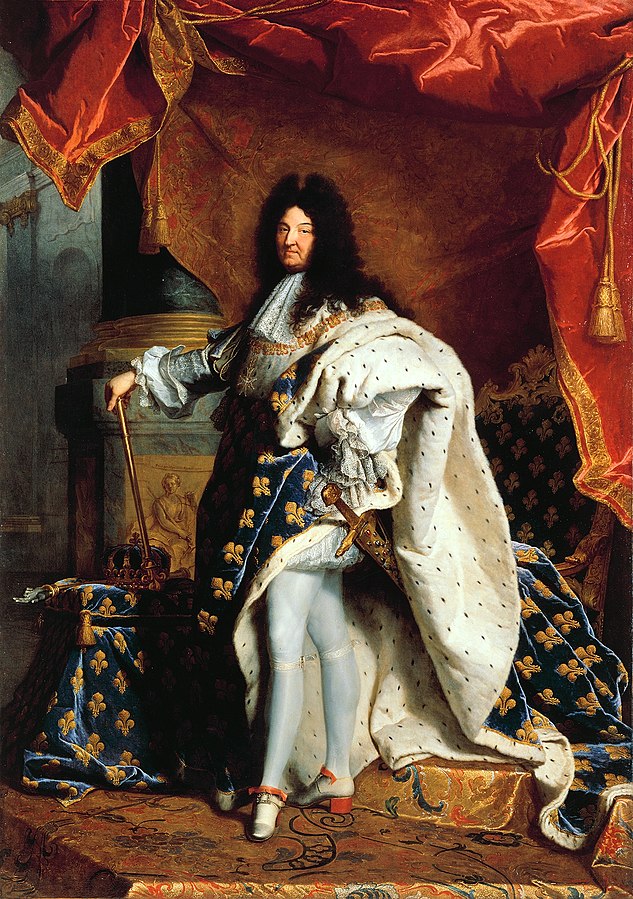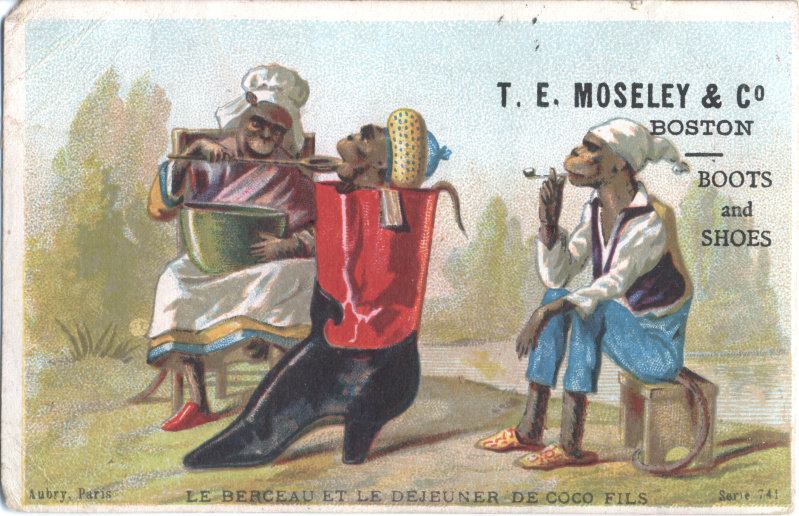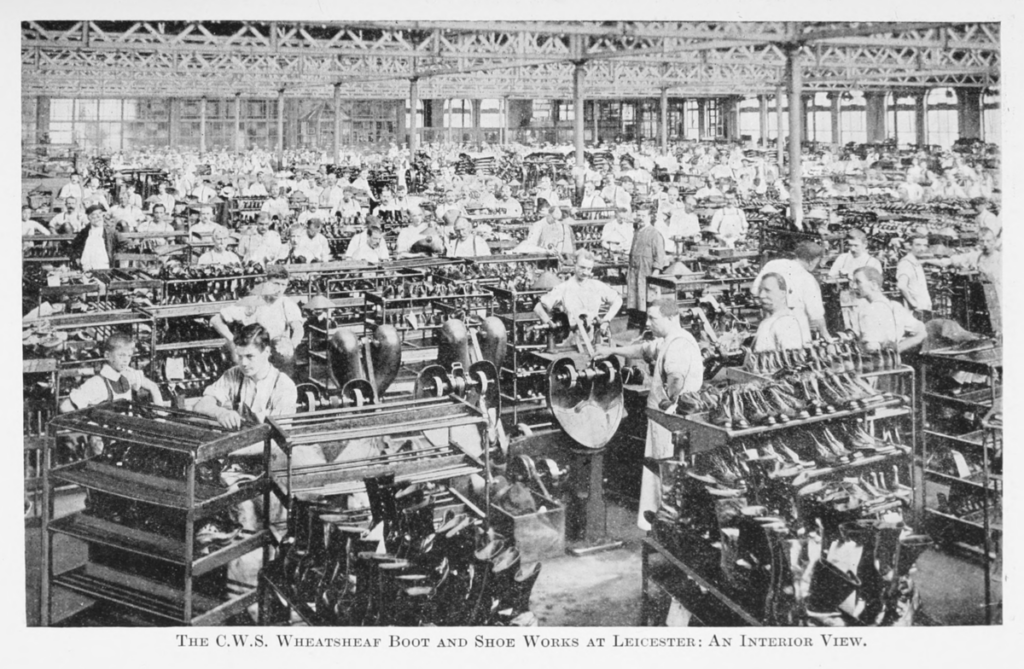Men’s dress shoes have evolved quite a lot since the formal sandals of ancient Greece. Between the Middle Ages and the Renaissance, men switched back and forth between decorative pointy and round shoes. High heels became a staple until the 1800s, when elites swapped boots for Oxfords, Jazz Age men embraced brogued Oxfords, and now modern-day casualization allows for a wider range of formal designs than ever.
Did you know that in 2008, archaeologists dug up a 5,500 year-old shoe in the Areni-1 cave?
Just thought that’d be a fun fact to share — and a testament to the durability of a hand-made full-grain leather shoe, in case you had any doubts.
Funny how we’ve gone from such simple, function-focused footwear to the wide ranging universe of shoe designs today.
There are a lot of dress shoes out there.
Today, we’re going to take that very journey. In this history of dress shoes for men, we’ll start from the very beginning.
Table of Contents
Origins and Early Styles
Ancient Roots
The definite origins of footwear, in general, are difficult to pinpoint. As mentioned, the Areni-1 shoe is a famous 5,500 year-old example. This leather shoe was found in Armenia and was built with primitive equipment and scant resources.
Always ahead of their time, the people of Ancient Greece were probably the first to build what would be considered a formal shoe. Most went barefoot, but theater actors and high-status citizens wore minimalist leather sandals.
The Romans also wore sandal-like shoes. Like the Greeks, though, this was usually reserved for the very wealthy as well as the soldiers. They wore a shoe called the calibrae, a leather sandal-like piece of footwear with thick boot-like soles.
Medieval Elegance
By the Middle Ages, people started to focus on looks as much as function. When it came to medieval fashion as a whole, kings and queens just wore more expensive versions of what everyone else wore. Leggings and leather slippers were popular among aristocratic men and women.
They wore “turn shoes”. They were built inside out using a wooden last, then turned right-side in before usage.
Embroidery and inscriptions started to become common, and again—kings, queens, and their court were really the only class of people who needed dress shoes.
After the Black Plague of the mid-14th century, ankle boots became a popular formal shoe, featuring laces and buttons for fastening. At first, styles became less diverse since so many cobblers died. But, as wealth started to redistribute and Europe started to bounce back economically, fashion made a comeback too.
Pointed shoes became the go-to design for formal footwear.
As a result, a style of shoe called the Cracow, named after the Polish capital, became all the rage.
Renaissance to Victorian Era
The Rise of Heels
In the 1400s, pointy shoes remained a staple among high-status men. Men’s shoes were much pointier and much longer than women’s shoes. They got so long that it became difficult to walk. Perhaps we can call this the introduction of suffering for fashion?
King Henry IV hated the pointy shoes and actually regulated their usage in his Sumptuary Laws. These were laws meant to manage consumption. Nobles and royals were allowed to wear the longest and pointiest shoes, while the new middle-class (upwardly mobile merchants) were allowed a moderate length. Peasants were subjected to the shortest, nubbiest shoes.
Possibly as a result of this regulation, by the 16th century, round shoes came back into vogue.
The 17th century introduced a feature still prominent in men’s and women’s dress shoes today: The high heel.
Persian equestrians have been wearing heels for centuries. But, in a post-exploration world, the Persian Shah started to send soldiers to Europe for diplomatic reasons. Aristocrats in Germany, Spain, and Russia caught Persia-mania. High heels became a staple for royals, and it was thought to symbolize strength and virility.
Showing off one’s long, strong legs, wrapped in tights, complemented by high heels was the order of the day for formal occasions.
Just look at any portrait of Archduke Albert, or most famously, Louis XIV. In fact, Louis XIV implemented an edict in the 1670s that banned non-nobles from wearing heels.
Industrial Revolution Impact
As we get closer to the Industrial Revolution, a gender swap happens with the high heel shoe. Women’s shoes became more narrow and decorative, and the heels got higher and higher. Men’s shoes became wider and sturdier.
Between 1730 and 1740, men stopped wearing high heels altogether.
As people started to use machines to create goods, shoes were being made faster than ever. By the 1870s, shoemaking was industrialized.
This allowed more and more people to wear shoes, and traditionally made footwear became a luxury.
In the 19th century, most people wore short boots, with ankle boots being the most popular. They were mostly button-ups, as lacing was considered feminine.
Then, the Oxford shoe made its debut. Actually, a version of it had existed as early as the late 1600s in Scotland as a non-formal shoe. But, in the late 1800s, students on prep school campuses and prestigious universities started wearing them over the high tops and boots that were popular at the time.
I think of this as phase one of men transforming formerly casual footwear into dress shoes. Phase two happens in the Jazz Age.
20th Century Revolutions
The Roaring Twenties
The Roaring Twenties was all about rebellion. From Oxfords to brogues (formerly an outdoor shoe for Gaelic farmers), dress shoe rotations experienced a practical transformation. It was a new era of formal shoes. Arguably, we still live in that era today, though we’ve embraced understatedness.
Only really conservative men wore dress boots. Meanwhile, tassel loafers and spectator shoes were worn as dress shoes by all classes of men.
The spectator shoe, otherwise known as the correspondent shoe, is a semi-brogued Oxford. It features a lively two-tone design with a different, darker color for the toe and heel cap.
Shoe spats, though considered a rebellious aesthetic as they were associated with bootleggers and gangsters, were popularly paired with dress boots. During the prohibition era, bootleggers weren’t exactly public enemy number one—at least not to the greater population.
Post-War Elegance
Since the 1940s was the era of the zoot suit, there weren’t a ton of changes when it came to dress shoe trends. The Jazz Age’s loud, party-friendly footwear perfectly matched the day’s fashion.
As the post-war era continued, though, men embraced a more understated elegance. The ‘50s was a traditional time. The youth mainly wore the two-tone Oxford, and suit-and-tie professionals wore traditional dress shoes as we know them today.
Brown and black Oxfords and brogues were common. Loafers were reserved for casual outfits, which were as clean-lined and dapper as the suits.
More changes were seen in the swinging ‘60s, arguably a descendant of the Roaring 20s and ancestor to the ‘90s (the platform shoe, flared jeans part of the ‘90s, not the grungy former part).
Men’s fashion, particularly footwear, featured several staples, including monk strap shoes, Chelsea boots, and loafers. James Bond gets much credit for making casual chic because he paired a dive watch with a dinner jacket. People forget he also wore loafers with a suit.
Contemporary Trends
Casualization of Formality
Today, we live in a casual era. Of course, there are still traditional offices and black-tie events in which time-honored dress shoes are required. It’s funny to think that a pair of black Oxfords, something you can wear with a tuxedo, was once a rebellion.
Unlike in the ‘50s, though, you can also wear loafers with your suits and still look perfectly formal. Technically, opera pumps are a type of loafer, and you can really only wear them with tuxedos.
Even more, you can wear low-profile leather sneakers with your suit these days. I wouldn’t call them dress shoes, but the concept of the dress sneaker is real. And in most dress codes, it’s perfectly acceptable.
Sustainable Practices
Since fast fashion, which is industrialization on steroids, has become so common, more and more consumers and shoemakers are embracing sustainability and eco-consciousness.
One way they’re doing this is by going back to the old-fashioned, bespoke shoemakers. They are few and far between, but thanks to the internet, distance from you to them isn’t as big of a problem.
Also, a lot of new brands and digital natives are challenging legacy shoe brands by cutting out the middlemen. This allows them to implement sustainable practices without that extra cost impacting the consumer the way it would in a traditional retail situation.
Beckett Simonon, for example, partners with tanneries gold-rated by the Leather Working Group. This means they’ve been surveyed and certified thanks to practices such as using less water. Beckett Simonon also has a shoe recycling program.
Amberjack partners with a solar-powered tannery, and uses linen dust bags instead of nylon ones, and ships their shoes directly in the shipping box.
Conclusion
We haven’t seen major aesthetic changes in the past few years besides the casualization. Interestingly, suit cuts are ever-changing and evergreen, but I still wear the same style of leather Oxfords and loafers to work as my dad did.
The main difference is that I can wear sneakers on casual Fridays, and he was never able to.
Plus, my friends in tech? Jeans and sneakers all week long.
I’d be interested to find out what work shoes and casual shoes will be considered dress shoes to my great-grandchildren, though.
FAQs
When was the first dress shoe made?
The concept of dress shoes has been around since ancient times. However, men in the Middle Ages and the Renaissance enjoyed formal leather footwear, while high-heels were popular in the 1600s and 1700s. Oxfords became popular in the 1800s.
When did men start wearing formal shoes?
Men have worn formal shoes since ancient times, but they were often reserved for high-status people. After the Industrial Age, more and more people started to wear dress shoes.
What are the classic styles of men’s dress shoes?
A few classic styles of men’s shoes include Oxfords and brogues, dress boots, monk straps, derby shoes, and even loafers. Sleek Italian loafers are more formal than penny loafers, but these days, most loafers can be worn as dress shoes.





Join the Discussion